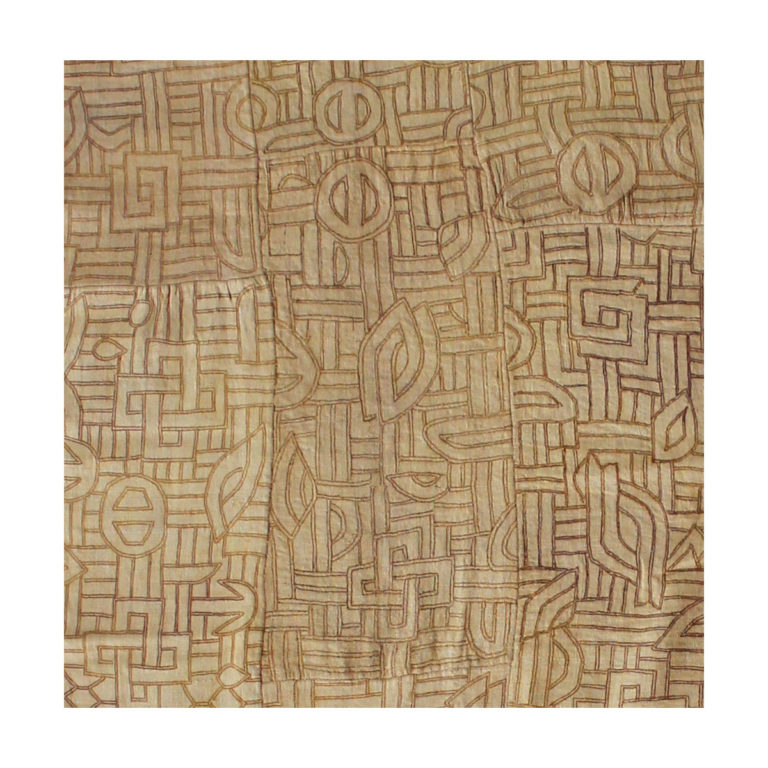
T100
Large, wheat-colored Kuba cloth Raffia fiber Congo 2oth century 37″ x 144″ Kuba cloth is unique in the Democratic Republic of the Congo, for its elaboration and complexity of design and surface decoration. Most textiles are a variation on rectangular or square pieces of woven palm leaf fiber enhanced by geometric designs executed in linear embroidery and other stitches, which are cut to form pile surfaces resembling velvet. Women are responsible for transforming raffia cloth into various forms of textiles, including ceremonial skirts, ‘velvet’ tribute cloths, headdresses and basketry. In Kuba culture, men are responsible for raffia palm cultivation and the weaving of raffia cloth. Several types of raffia cloth are produced for different purposes, the most common form of which is a plain woven cloth that is used as the foundation for decorated textile production. Men produce the cloth on inclined, single-heddle looms and then use it to make their clothing and to supply foundation cloth to female members of their clan section. The cloth is coarse when it is first cut from the loom, so it is then pounded in a mortar, which softens it and renders it ready for the application of surface decoration. The Kuba Kingdom, was a pre-colonial kingdom in Central Africa. The Kuba Kingdom flourished between the 17th and 19th centuries in the region bordered by the Sankuru, Lulua, and Kasai rivers in the south-east of the modern-day Democratic Republic of the Congo. Nineteen different ethnic groups are included in the kingdom, which still exists and is presided over by the Kin